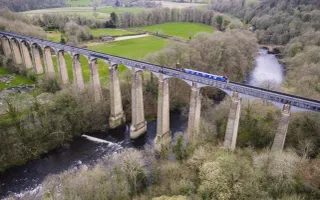Historically, water supply was a constant problem on canals. The earliest reservoirs date from the 1760s and over time they were supplemented by pumping stations that raised water from wells or rivers, or re-circulated it by back-pumping at locks.
Powered by wind and steam
Some early pumping stations were wind-powered, but steam-powered beam engine pumps were more common. Early 19th century pump-houses were generally of a functional utilitarian design, but later examples were more ornate and tended to be smaller as technology advanced.
Oldest steam engine in the world
At Claverton on the Kennet & Avon, there is a waterwheel-powered pump designed by John Rennie in 1813, which pumps water from the River Avon up into the canal. Further east on the same waterway is Crofton Pumping Station which contains the oldest working steam engine in the world – a Boulton & Watt engine which was originally built in 1812 (the year that Napoleon invaded Russia). It was modified in 1844, worked until 1958 and has since been restored.
Other significant pumping stations are located on the Grand Union Canal, where there is a series known as the Northern Engines. One of these, at Soulbury, is currently undergoing repair and archaeological investigation. At the height of their extent, in 1906, the Birmingham Canal Navigations were served by 17 pumping stations and six reservoirs.
Today, the Trust owns 99 pumping stations, 27 of which are still operational, as the work of supplying water to our canals never ceases.





